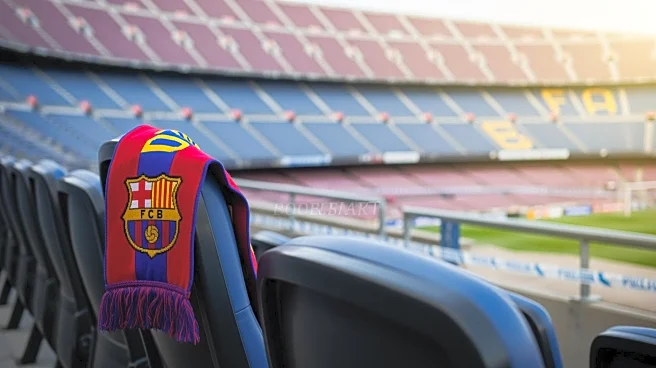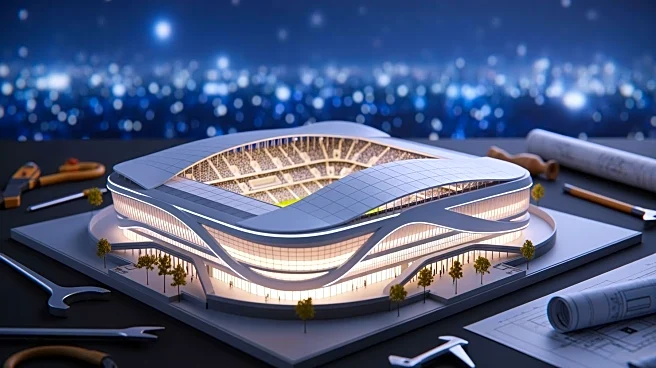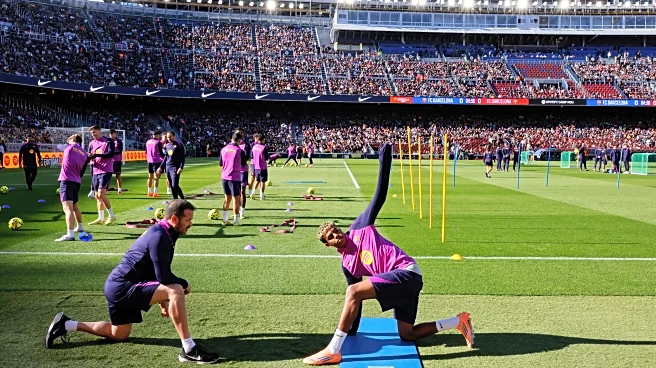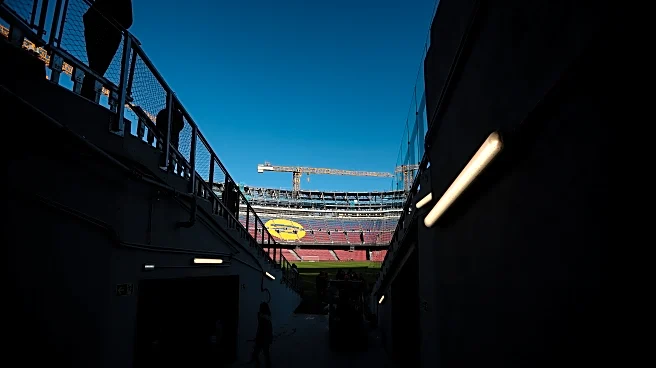What's Happening?
Barcelona's team returned to the Camp Nou stadium for the first time in over two years, as renovations continue. More than 20,000 fans attended the training session, marking a significant moment for the club
and its supporters. The stadium, which is undergoing extensive remodeling, still has construction cranes and scaffolding visible, with the upper tier incomplete. Club president Joan Laporta described the day as historic, emphasizing the importance of the project for the club's future. The renovations aim to expand the stadium's capacity to 105,000 seats, making it one of the largest in Europe. Despite the ongoing construction, fans expressed excitement about being back at the iconic venue.
Why It's Important?
The return to Camp Nou is crucial for Barcelona, both financially and culturally. The stadium's expansion is expected to boost matchday sales and merchandising opportunities, providing much-needed revenue for the club, which has faced financial challenges. The project is seen as a collective dream for Barcelona fans, known as 'cules,' and represents a significant milestone in the club's history. The ability to host games at Camp Nou again will enhance the team's home advantage, as the stadium is known for its intimidating atmosphere. The renovations are part of a broader strategy to secure the club's future and maintain its status as a leading European football team.
What's Next?
Barcelona hopes to host a game at Camp Nou with 45,000 fans later this month, although no specific date has been confirmed. The club aims to complete the renovations and fully reopen the stadium, but the timeline remains uncertain. The team will continue to play at the Olympic Stadium until the Camp Nou is ready for regular matches. The completion of the project will be closely watched by fans and stakeholders, as it promises to enhance the club's competitive edge and financial stability.
Beyond the Headlines
The renovation of Camp Nou reflects broader trends in sports infrastructure, where clubs invest in modernizing facilities to enhance fan experience and revenue streams. The project also highlights the challenges faced by sports organizations in balancing tradition with innovation. As Barcelona navigates its financial recovery, the successful completion of the stadium could serve as a model for other clubs facing similar challenges.













